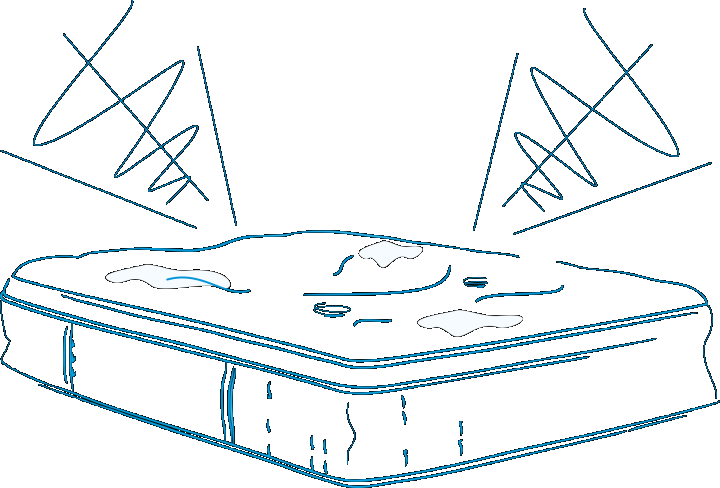To provide services at the highest level, we use cookies. Using the website requires you to choose settings related to their storage on your device. If you want to know what each type of cookie is used for, click the Details button below.
How often you should replace Your mattress? 6 kwietnia 2021 |

A spring mattress should be replaced with another type of mattress as soon as possible. Very often, spring mattresses lose their original properties just a few months after purchase, and rarely do they retain them for 2-3 years.
A coconut mattress should be replaced with another type of mattress as soon as possible. Most coconut mattresses have nothing to do with hygiene and are harmful to health. The quality of most of them is very low, making them unsuitable for use even a few months after purchase, rarely after a maximum of 2-3 years.
A foam mattress should be replaced depending on the type of polyurethane foams that make up its core. If they are traditional closed-cell foams like Type T, the mattress often needs replacing just a few weeks after use. The most durable mattresses, which can be replaced even after 10-15 years, are made from high-resilience open-cell foams like HR. Avoid mattresses with memory foam in the top layer.
Mattresses should be replaced for hygienic, health, and aesthetic reasons. Those that need replacing do not provide adequate body support and spinal alignment. Additionally, many are inhabited by insects and microorganisms, for which some types of mattresses are an ideal home.
It is generally accepted that the time to replace a mattress has come when it no longer provides comfort. This is due to the mattress losing its functionality. Therefore, a mattress should be replaced when it negatively affects sleep quality. A new mattress must be invested in when the old one has visible damage, noticeable indentations, or is harmful to health.